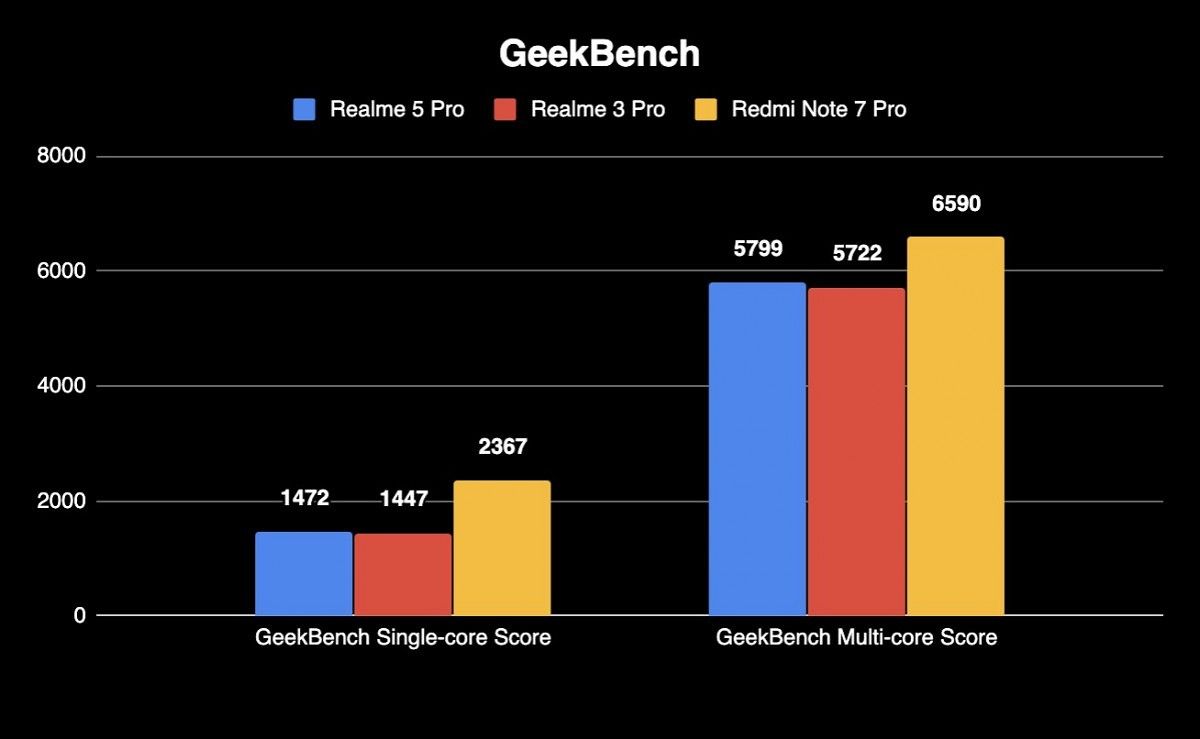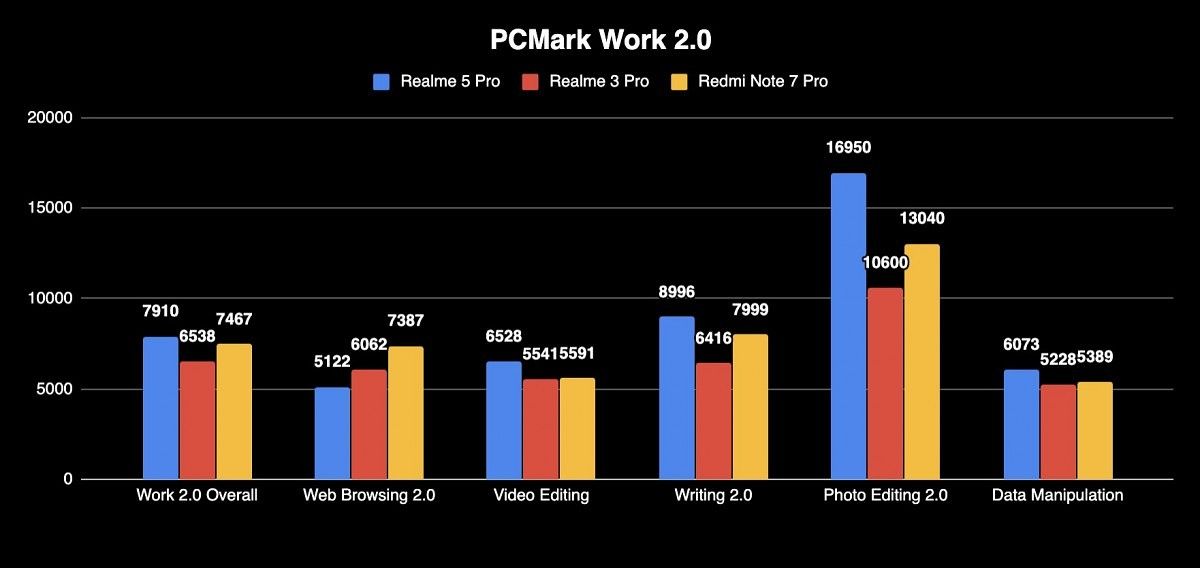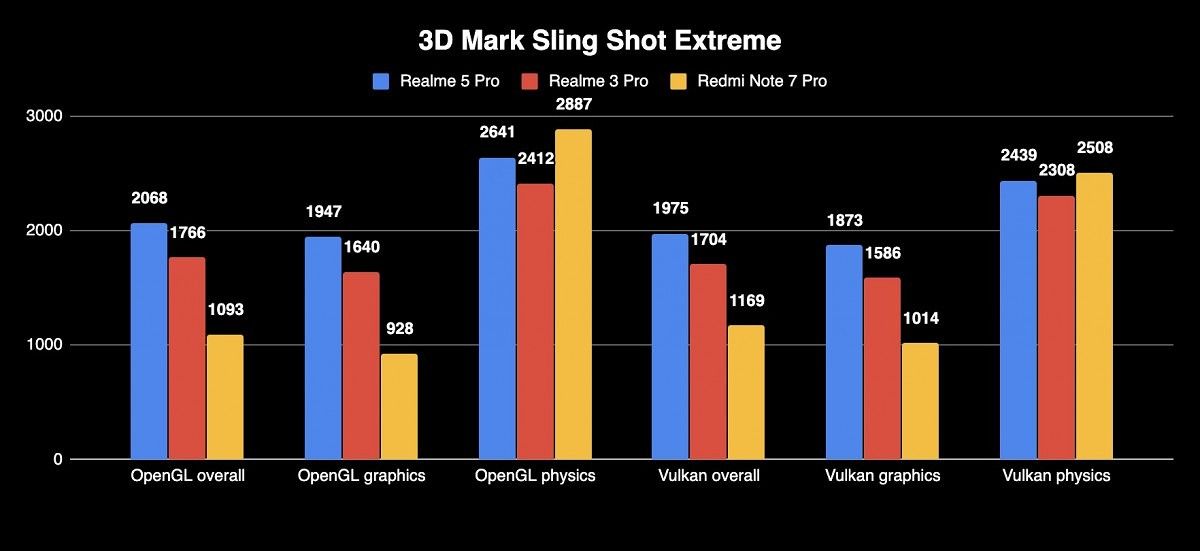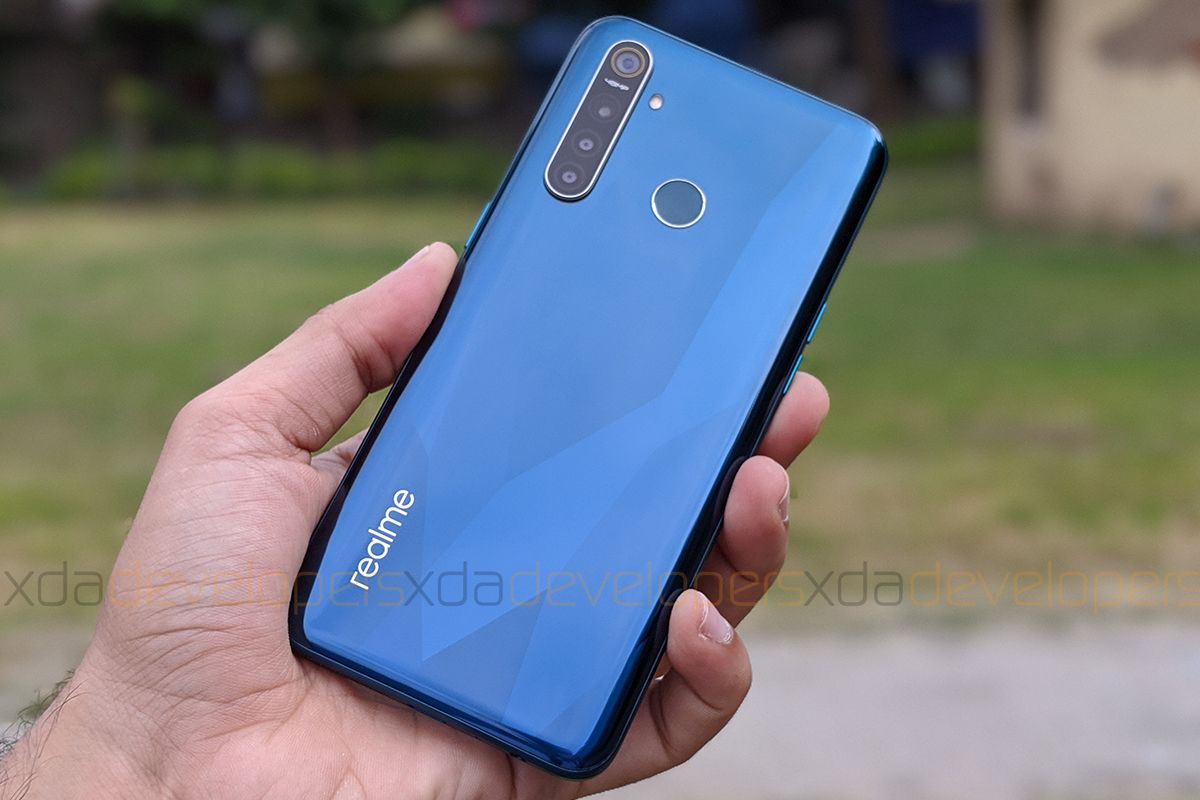Realme, OPPO's spin-off brand, has been reshaping consumers' perceptions with its aggressive pricing and untiring leaps in India. In April this year, they hosted an event to launch the Realme 3 Pro. The company called it their flagship smartphone, justifying that it was (at that time) the most pricey device they sold. Four months later, Realme hosted another event to launch the successor to their former flagship and this device was called the Realme 5 Pro. While Realme didn't publicize the Realme 5 Pro as their flagship (since their lineup now includes pricier devices such as the Realme X), the smartphone can be seen as a noteworthy upgrade to the 3 Pro.
More than a mere refresh in terms of its specifications, the Realme 5 Pro comes with a stimulating and relatively more premium back design. Meanwhile, the quad-camera setup is clearly an attention grabber. While both – the Pro and the rookie – in the Realme 5 series devices get quad cameras on the back, the Realme 5 Pro is equipped with a 48MP primary camera and this puts it in direct competition opposite the Redmi Note 7 Pro.
With the amount of flak that Realme has had to face for using the Qualcomm Snapdragon 710 mobile platform on its entry-level flagship device, the Realme X, the company has consciously moved to a slightly better version of the SoC i.e. the Snapdragon 712. In spite of the boost in performance, the better camera, and attractive new appearance, the Realme 5 Pro bears the same launch price as the Realme 3 Pro and this exemplifies how competitive the Indian market tends to be. Meanwhile, the price of the Realme 3 Pro has been slashed to make it a more interesting purchase for people with a limited budget.
We have the 8GB RAM variant of Realme 5 Pro which has been loaned to us by Realme. Even though the 48MP quad-camera setup commands most of our attention, we'll be covering everything that's new on Realme's new budget frontrunner in this article. Our focus for this piece involves the improvement over the Realme 3 Pro.
Realme 5 Pro Specifications
|
Specifications |
Realme 5 Pro |
|---|---|
|
Dimensions & Weight |
|
|
Display |
|
|
SoC |
|
|
RAM |
4GB/6GB/8GB |
|
Storage |
64GB/128GB UFS 2.1Dedicated microSD slot |
|
Battery |
4045mAh, 20W VOOC 3.0 fast charging |
|
Fingerprint Sensor |
Rear-mounted fingerprint |
|
Rear Camera |
|
|
Front Camera |
|
|
Android Version |
ColorOS 6 based on Android 9 Pie |
|
Colors |
Crystal Green, Sparkling Blue |
Design & Display
Realme did a marvelous job in terms of the design and the ergonomics of the Realme 3 Pro and the finesse is seen once again on the Realme 5 Pro. Setting the Realme 5 Pro apart from 3 Pro just by looking heads-on will be a very consuming task. But as you flip the two phones, the Realme 5 Pro comes across as a more intriguing and relatively premium looking device. While Realme is sticking to a polycarbonate back on the Realme 5 Pro, the new design leans more towards abstract than the Realme 3 Pro.
With its sharp cuts and high reflectivity, Realme appears to have drawn the inspiration from naturally existing crystals. The design consists of polygons of varying arm lengths and vertices. Each of the polygons differs significantly from the adjacent one but as a whole, the design appears to be aiming for symmetry. With the varying intensity of light that strikes the back surface, one can see an altering pattern and these change as the angle to the light source changes.
The Realme 5 Pro weighs more than its predecessor but the relatively more rounded edges on the back allow the device to be grippier. The smartphone is not only heavier but also relatively thicker than the Realme 3 Pro and this is perhaps to accommodate the sensors required for the quad-camera setup, which readily grabs your attention. The fingerprint scanner on the back remains to be at a fairly approachable position.
Besides the thick back panel, the chamfering of the frame closely resembles that on the Realme 3 Pro. A noticeable change with the updated design is the new USB Type-C port at the bottom as opposed to the microUSB on the 3 Pro. Alongside the USB-C port, the bottom has a headphone jack, the primary microphone, and speaker grille. This speaker has been optimized with Dirac's Power Sound technology for a louder and crisper output from the small mono speaker.
The bevels on the Realme 5 Pro's frame, as in the case of the 3 Pro, also help with an easy grip and prevent the mono speaker from being blocked or muffled when the phone is held in the landscape position. The right side of the smartphone houses the power button whereas the left side features the volume up and down buttons as well as the SIM tray which has a dedicated microSD card slot. The top of the smartphone features the secondary microphone for canceling noise during calls as well as recording stereo sound while recording audios and videos.
The Realme 5 Pro shares the same 6.3-inch FullHD+ IPS LCD display with a waterdrop notch as the 3 Pro. The notch houses a 16MP camera for selfies with an earpiece above it. For the front, the Realme 5 Pro looks identical to the 3 Pro and has the same screen-to-body ratio of ~91%. The display is fairly legible in outdoor conditions but the readability might take a hit under direct sunlight. In Settings, one can change the temperature of the display to suit their eyes but there are no options to customize the contrast or the dominant color of the display (something we see on MIUI). As a measure to protect your eyes at night, you can choose between Night Shield (which includes a blue light filter), a black and white mode, and a high-contrast mode with a color-inverted black and white mode.
In terms of the quality of the display, the default settings on the Realme 5 Pro render vibrant colors and good contrast. Meanwhile, the pixel density of 409ppi allows the Realme 5 Pro's display to deliver a fair amount of details.
Overall, the minor improvements in terms of the design of the Realme 5 Pro make it a worthy successor to the Realme 3 Pro, especially since it will be selling at the same price as the Realme 3 Pro. While there has been no upgrade in terms of the display, it only bears witness to the fact that the earlier display was good enough for this price and didn't require a refresh.
Camera First Impressions
One of the most compelling improvements on the Realme 5 Pro is its camera and this is evident from the company's marketing. The Realme 5 Pro comes with a 48MP Sony IMX586 as the primary sensor on the back – the same as the Realme X. This sensor is hooked with an f/1.7 lens and is externally distinguishable because of the yellow rings used to highlight it. The auxiliary cameras include an 8MP wide-angle sensor with an f/2.25 aperture lens that allows a 119º wide field of view, a 2MP macro-lens with a fixed focus at 4cm from the f/2.4 lens, and lastly a 2MP depth sensor which is also paired with an f/2.4 aperture lens.
The 48MP Sony sensor supports 4-in-1 pixel-binning and outputs brighter and more saturated 12MP shots while the high f/1.7 aperture value ensures that objects in low-light scenarios get a fair amount of visibility. Meanwhile, the depth sensor has a lower resolution than it did on the Realme 3 Pro and the Realme X, leading us to question the practical usefulness of a depth sensor.
On the front, the Realme 5 Pro is using the same 16MP sensor as the Realme X and it is paired with an f/2.0 aperture lens. This setup supports 2-in-1 pixel binning, resulting in 8MP images, but only while using the Portrait mode.
The Camera UI on the Realme 5 Pro is the same as other Realme devices and in this interface, the various modes of the camera other than the Photo, Video, and Portrait mode are nestled in an overflow menu which can be accessed by pressing the hamburger icon. The options exclusive to the Realme 5 Pro include the wide-angle mode, which is located between the HDR and Chroma Boost toggles on the top menu bar, and the 48MP as well as Macro modes which are hidden away in the hamburger menu. Additionally, the smartphone supports standard Realme camera modes such as Nightscape, Pano (panorama), and Expert (Pro mode). It also supports video features such as Slo-mo at 120fps, 240fps, and 960fps along with a Time-lapse mode.
Since the Realme 5 Pro has the same sensor as the Realme X, we see similar trends in terms of the details, the vibrancy of colors, as well as the difference between the 48MP and 12MP images. The 48MP Sony sensor has proven to be a worthy choice by many smartphone brands with devices using this sensor across various price ranges. This range begins with the likes of the Realme 5 Pro and the Redmi Note 7 Pro, ropes in popular entry-level flagships such as the Redmi K20 Pro, OPPO Reno 10X, and the ASUS ZenFone 6 (ASUS 6Z), and extends all the way up to the OnePlus 7 Pro.
Not only is the camera hardware impeccable, but Realme has also done a good job of optimizing the software. The images taken in the Photo mode stand out as spectacular if we take the Realme 5 Pro's price into consideration. These 12MP shots appear to have better color saturation and more warmth than the 48MP images, thanks to pixel binning. The 12MP images also tend to be brighter than 48MP ones and this allows for a richer dynamic range and color profile. Furthermore, to boost the colors, Realme's Chroma Boost mode is highly effective for improving the color vibrancy.
There is an observable shutter lag of nearly a second while taking images in the 48MP mode and the resulting images have a file size of nearly 20MB per image. Because of this lag in image processing as well as for the massive file sizes, Realme has omitted HDR support for 48MP shots. The mode, however, does support Chroma Boost.
The album below offers a quick preview of the capabilities of the Realme 5 Pro's primary camera in the 12MP and 48MP along with enhancements in HDR as well as Chroma Boost:
In low light, the 12MP images demonstrate the expected trend of noticeably higher brightness than the 48MP images. While the images in night light aren't astonishingly bright or pleasant, the Nightscape mode improves the lighting and the colors significantly in a way similar to Google's Night Sight. Instead of relying on exposing the sensor for a few seconds for brighter images at night, Realme's Nightscape mode works by stacking multiple frames at different exposure levels. The images taken with the Realme 5 Pro using the 12MP, 48MP, and the Nightscape modes are as follows:
The wide-angle sensor is useful for fitting vast landscapes and large groups within the frame. Its utility, however, may be limited since this sensor has a fixed focus. From an overview, images appear well-composed but zooming into the images easily reveals the inadequate details and poor structure in the images. Due to the smaller aperture size, the images are dimmer compared to the ones clicked with the primary camera. Furthermore, the images captured with this sensor are dominated by cooler tones. Although Chroma Boost can enhance the saturation of the colors, the colors are still cooler than corresponding images clicked using the main sensor. Here are some of the images taken with the wide-angle sensor.
With a generous heart, Realme has added a macro sensor into the setup but this 2MP sensor is paired with a fixed-focus lens and the setup is very limiting. The focal length is fixed at 4cm (1.6in) and moving the camera to this exact length from a tiny object becomes a challenging task. Here are a few samples of the images clicked with the macro sensor on the Realme 5 Pro:
Coming to portrait photography, the Realme 5 Pro does an appreciable job of accurately separating the background from the objects in focus. While the images. Just like on the Realme X, the background blurring effect is less aggressive than the Realme 3 Pro. Below is a couple of portrait shots taken at an arm-length distance using Realme 5 Pro's main camera.
Lastly, the 16MP selfie camera follows the same trend we've seen on previous Realme devices. The colors on the selfies lack the same punchy effect as the rear camera and there's a fair amount of smoothening and whitening even when the Beauty Mode is turned off. Post-processing software like Snapseed can be used to remedy the dull colors to some extent but the lack of details in the images is something we can't fix using editing tools. In terms of portrait selfies, edge detection is decent but not as accurate as in the case of the rear camera. Moreover, the background blurring is more aggressive than the portraits taken with the rear camera and there's no plausible way of editing the strength of this blur before or after clicking the images. A couple of selfies taken with the Realme 5 Pro are:
In terms of video capturing, the Realme 5 Pro can record 4K videos using the rear camera and Full HD videos using the front camera. Even though the Sony sensor supports 4K recording at 60fps, the smartphone's abilities are limited to 30fps recording due to the performance constraints of the Snapdragon 712 processor. Further, the wide-angle and the macro sensors cannot be used for recording videos. The smartphone is also capable of recording slow-motion videos at up to 960fps, although recordings at 120fps and 240fps are smoother and more convincing in terms of the quality.
Overall, Realme's pitch for the Realme 5 Pro being a camera-centric mid-range device is fairly convincing. The primary camera is impressive in most scenarios and Realme seems to have done a remarkable job in terms of optimizing the camera software. The premise of a quad camera, however, feels like a marketing gimmick since the macro lens is barely useful and one could use the primary sensor with digital zoom to click better macro shots. The wide-angle sensor is relatively more useful than the macro lens but its utility also comes to be limited due to inferior details, pale colors, and lack of auto-focus. Another peeve with the camera is the thick bump, which perhaps could have been avoided had Realme been aiming for fewer sensors. But once again, the impressive pricing of the Realme 5 Pro overshadows any criticism we may have for the device.
Realme has also responded to criticism such as in terms of the processor by offering a better chipset with the Realme 5 Pro. Let's take a look at the impact the upgraded internal setup has on the performance of the smartphone.
Performance: Realme 5 Pro vs Realme 3 Pro vs Redmi Note 7 Pro
The most evident change under the hood of the Realme 5 Pro is the relatively better, Qualcomm Snapdragon 712, which is an overclocked Snapdragon 710. The Snapdragon 712 mobile platform comes with 2X high-performance Kryo 360 cores clocked at 2.3GHz (compared to 2.2GHz on the Snapdragon 710) and 6X power-efficient cores with a clock speed of 1.7GHz, which is same as earlier, and the Adreno 616 GPU. Qualcomm says that the higher clock speed is expected to improve the processing capabilities by 10% while the graphics performance is boosted by 35%. Furthermore, the Realme 5 Pro is now using UFS 2.1 storage technology which increases the storage transfer speeds, thereby improving the overall app launching and data transfer speeds.
Although the Snapdragon 710 on Realme 3 Pro and the Realme X sufficed for most of the routine tasks including gaming, we ran some synthetic benchmarks to quantify the improvement due to the new SoC and upgraded storage. We also intend to compare these scores with that of the Snapdragon 675 on the Redmi Note 7 Pro since this was one of major reasons, Realme's choice of an older processor was criticized. Here's a comparative analysis of the Realme 5 Pro's performance quantified using benchmark scores.
Note: The smartphones used for this comparison include Realme 5 Pro (8GB RAM), Realme 3 Pro (6GB RAM), and Redmi Note 7 Pro (4GB RAM).
Starting with GeekBench 4, the Realme 5 Pro can be seen to show a slight improvement over the 3 Pro but both of these devices are easily defeated by the Redmi Note 7 Pro, which scores significantly higher on single-core scores. In his review of the Redmi Note 7 Pro, Idrees found that the Snapdragon 675's single-core score was almost on par with the Snapdragon 845 and the reason behind this is perhaps the newer Arm Cortex A76 CPU on the chipset compared to the A75 CPUs in the Snapdragon 712.
Comparing the PCMark Work 2.0 scores, the Realme 5 Pro paces forth as the most effective smartphone out of the three. This means that the Realme 5 Pro is more effective in terms of both daily tasks such as photo or video editing, data manipulation, or document editing. However, it must be noted that this lead could be attributed to the higher RAM on the Realme 5 Pro variant we have. The Redmi Note 7 Pro is likely to fare better in the case of web browsing.
While the Snapdragon 675 uses a newer CPU design, the Adreno 612 GPU is not as powerful as the Adreno 616 on the Snapdragon 710/712. As a result, we see the Realme 5 Pro performing notably better than the Redmi Note 7 Pro in graphics-heavy tests in the 3D-intensive benchmarks such as 3DMark. This means that the Realme 5 Pro can be expected to perform better than the Note 7 Pro in applications and games with heavy 3D usage.
Lastly, we take a look at AndroBench scores, which give us a fair idea about the role that the new UFS 2.1 storage technology plays in the Realme 5 Pro's performance. Both the Realme 3 Pro and the Redmi Note 7 Pro come with eMMC NAND storages. There are some interesting trends which we see here. Firstly, since the Snapdragon 712 does not support dual-channel simultaneous data transfer, the UFS 2.1 read and write speeds are nearly half of what we see on devices like the Redmi K20 Pro, which can utilize the UFS storage technology to their full potential. Then, we note that while the Realme 5 Pro has higher sequential and random read speeds than both the Realme 3 Pro and the Redmi Note 7 Pro, the Note 7 Pro takes the lead in terms of the sequential and random write speeds.
Furthermore, the Note 7 Pro executes SQLite queries at nearly twice the rate as the other two. This anomaly can also be seen on the storage benchmarks for the UFS 3.0 storage on the OnePlus 7 and the OnePlus 7 Pro and can be due to one of the several parameters that complicate SQLite-based benchmarking. If you wish to learn more, you can read this paper by researchers at UT Austin.
Summing it up, we see the Redmi Note 7 Pro overpowering the Realme 5 Pro in terms of basic processing but the latter takes a substantial lead when it comes to 3D rendering. The Realme 5 Pro, on the other hand, tends to perform better in day-to-day tasks such as document editing, photo or video editing, etc. Both the devices are neck-and-neck in terms of gaming performance even though the Redmi might take a meager lead when it comes to app launching. Because of the better GPU, the Realme 5 Pro (as well as the Realme 3 Pro) can run Fortnite at up to 30fps on medium graphics settings while the same is limited to low settings on the Redmi Note 7 Pro. All three devices are capable of running PUBG Mobile at high graphics settings and offer a lag-free experience.
Clearly, there is no question of any of these phones not being able to run basic applications but I feel the Realme 5 Pro may have an edge over the Redmi Note 7 Pro in terms of longevity because of the superior GPU. Further, both of the Realme devices support Google's ARCore, which is essential for running augmented reality applications like Google Maps' Live View. Since there's a clear distinction between what these smartphones facilitate, your decision to buy either of the devices can, thus, be based on your expectations from it – it's a clear trade-off between better performance and better graphics.
User Experience
The Realme 5 Pro runs ColorOS 6, which has been borrowed from parent OPPO. The custom Android skin is based on Android 9 Pie and, as the name suggests, offers a strong dose of punchy colors throughout the interface. We have talked substantially about the features of the OS in our coverage of the Realme X, the Realme 3 Pro, and the Realme 3, which is why we'll focus on any change in the interface that the Realme 5 Pro brings. With the new device, Realme has addressed some of the peeving elements of the ColorOS interface, including the obtrusive quick setting tiles. The quick settings interface on the Realme 5 Pro now has smaller icons, which are now rounder in shape, and these resemble the interface in MIUI 10. The brightness slider is also rounder to match the overall design of the notifications tray.
Besides this change, Realme has added features like an app vault to lock away certain applications as well as added the functionality to limit the bandwidth of the mobile hotspot shared using the smartphone. The company has ensured these features will be rolling out to older devices via software updates.
Battery & Charging
Power management is something that ColorOS 6 does a phenomenal job at. Underlying the Android skin is a very aggressive app killing mechanism that prevents dormant apps from using any system resources or battery power so much so that a Realme smartphone can last for a couple of weeks in standby without any notable usage of the battery. These battery optimizations can be fully disabled for any application of your choice. The Realme 5 Pro packs in the same 4,045mAh battery as the Realme 3 Pro and this battery easily lasts for more than 24 hours with moderate usage and approximately 5 hours of screen-on time (SOT). When challenged with extensive tasks including power-hungry games, the battery can provide for around 12-15 hours of backup.
In terms of charging, the Realme 5 Pro supports VOOC 3.0 fast charging at 20 Watt. This technology, which works in line with OnePlus' philosophy of high voltage and low current discharge used in Dash Charge, helps charge the smartphone very quickly without heating it up significantly. The Realme 5 Pro charges from 10% to 90% in approximately an hour and this is nothing short of phenomenal for a smartphone at this price. The battery protection mechanism at play slows down charging from 90% to 100% and this takes approximately 15 minutes more. Still, the total time going from 10% to 100% of battery capacity takes nearly 75 minutes and that is hands-down one of the best in this price segment.
The smartphone does not support USB-PD or Qualcomm's Quick Charge because of its allegiance to VOOC charging technology and it charges slowly in that case and you'll always be required to carry the charger with you if you wish to enjoy those super-fast charging rates.
Realme 5 Pro: The Absolute Budget All-Rounder
The Realme 5 Pro has its fair share of quirks and ills but its advantages overshadow what might look like its disadvantages in front of the competition. Realme's campaign for the 5 Pro as an ultimate camera experience in this price range is likely to work very well since a lot of consumers in this price range appreciate the number of features over utility. The company might have delivered a similar experience without the macro lens on board but that would have robbed them of the opportunity of gloating about quad-camera setups on the Realme 5 and the Realme 5 Pro. The 48MP camera does work very well and can be considered more accessible than on Redmi Note 7 Pro, on which the 48MP mode is buried in the Pro mode. At this price point, the Realme 5 Pro is perhaps the best-stocked smartphone in terms of the camera but that comes at the expense of a noteworthy camera bump.
If you can overlook the sizeable camera bump that these four cameras result in, the Realme 5 Pro can actually be a great choice for you. As evident from our benchmark comparisons, the Realme 5 Pro scores well and even though it lags behind the Redmi Note 7 Pro in terms of processing capabilities, it takes a lead when it comes to graphics-intensive tasks due to a newer GPU.
Needless to say, the animating design on the Realme 5 Pro's back is a delight to look at. The company seems to be investing a fair chunk of its time innovating in terms of the design and this helps make their smartphones visually more distinctive compared to devices by other brands.
The Realme 5 Pro, once again, takes a major lead in terms of the battery backup and fast charging capabilities. While you have 20W charging at your disposal, the battery optimizations ensure that the Realme 5 Pro can help you make through the day without requiring a charger (with a certain degree of conservative usage).
The Realme 5 Pro is outrightly the most well-balanced device in the sub ₹15,000 ($210) segment in India.
It will soon be available in China as the Realme Q and should eventually come to other Asian markets. If the 48MP camera is not exciting enough for you, Realme has been working on its mid-range premium device, the Realme XT, which comes with a 64MP camera and shall be available in India by October. We had early access to the device, and you can check out the 64MP vs 48MP comparison in our camera review of the Realme XT.
As for the Realme 5 Pro, it is available in India via Flipkart. The 4GB/64GB variant will be priced at ₹13,999, the 6GB/64GB variant will cost ₹14,999, whereas the 8GB/128GB version will be available for ₹16,999. We expect these to be available via flash sales initially and eventually through open sale. Additionally, you might also be able to buy the Realme 5 Pro from offline retail stores in the coming months.

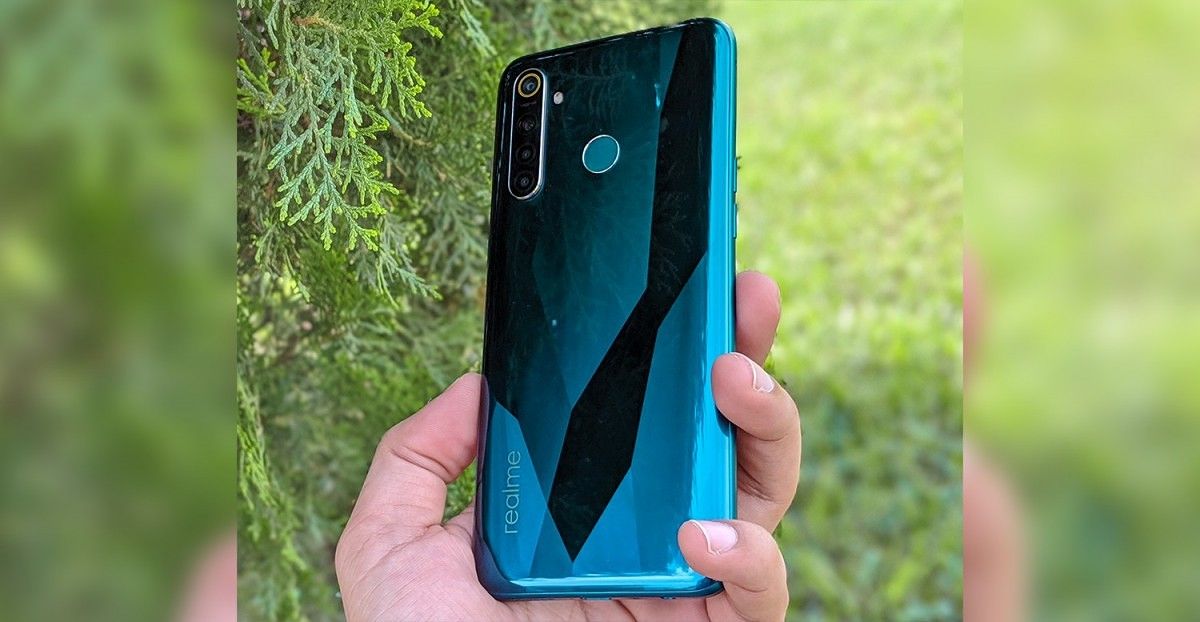
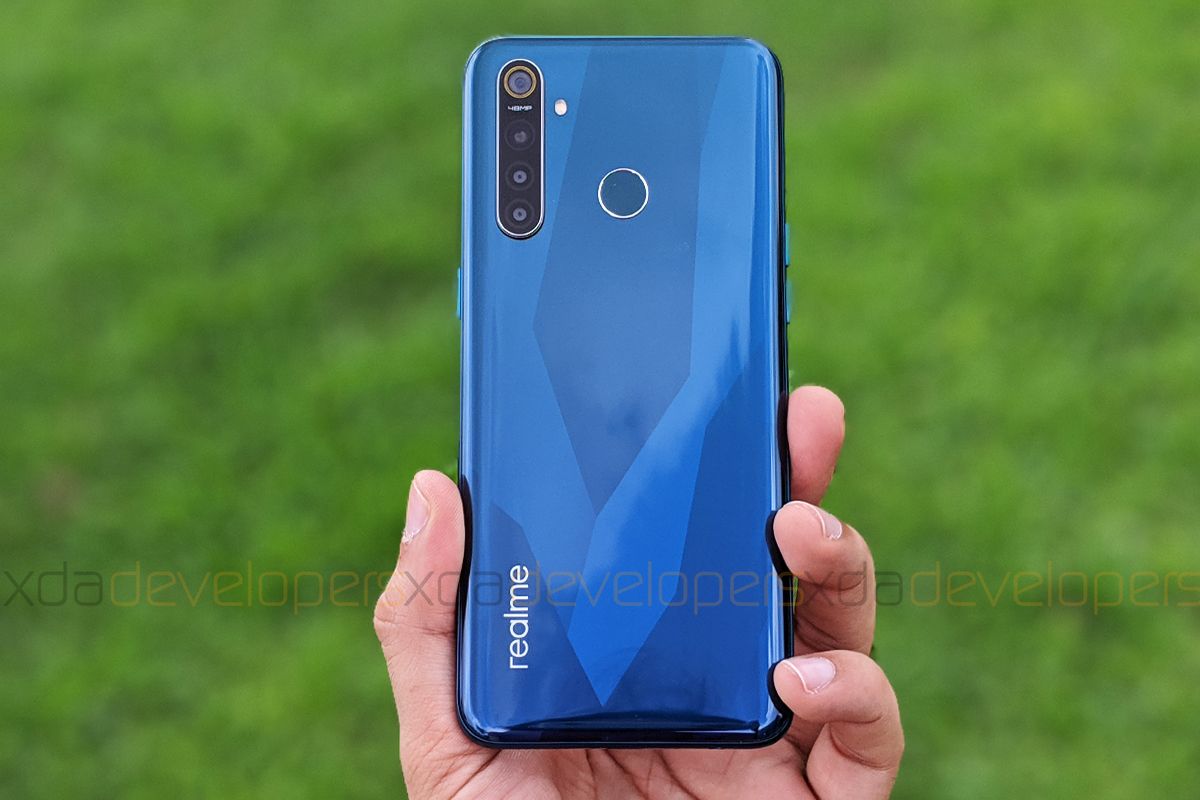
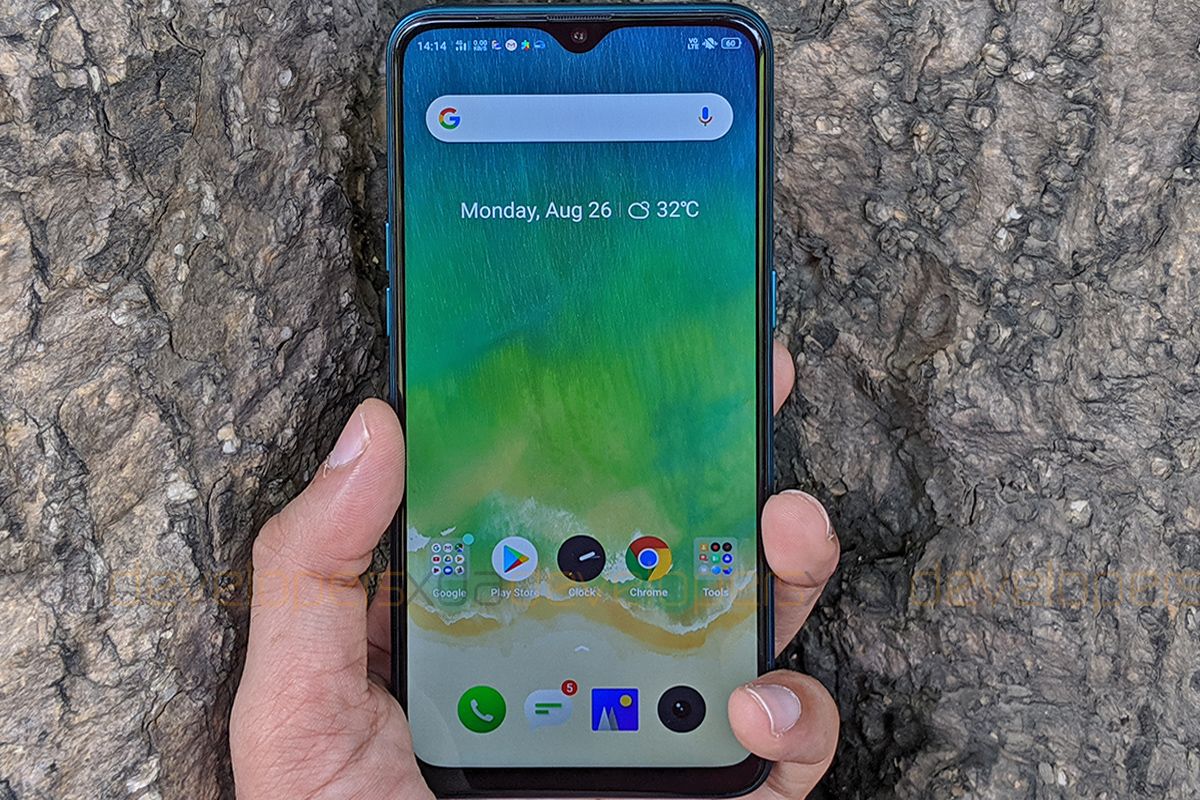
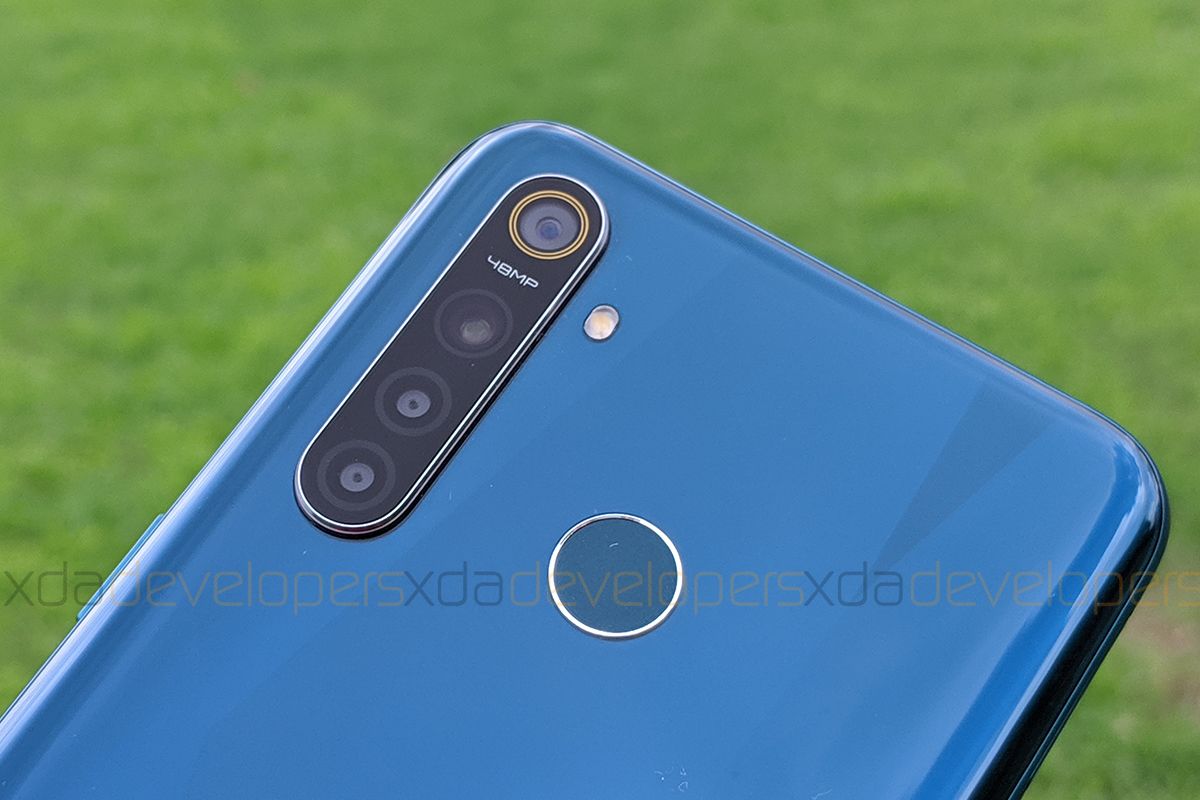
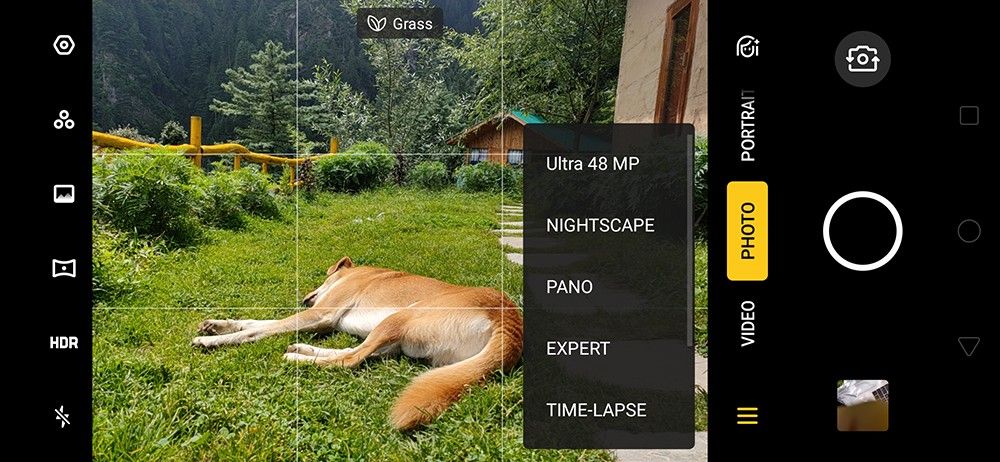
![Realme 5 Pro [12MP vs 48MP]](https://live.staticflickr.com/65535/48647163238_d934849fb5_h.jpg)





